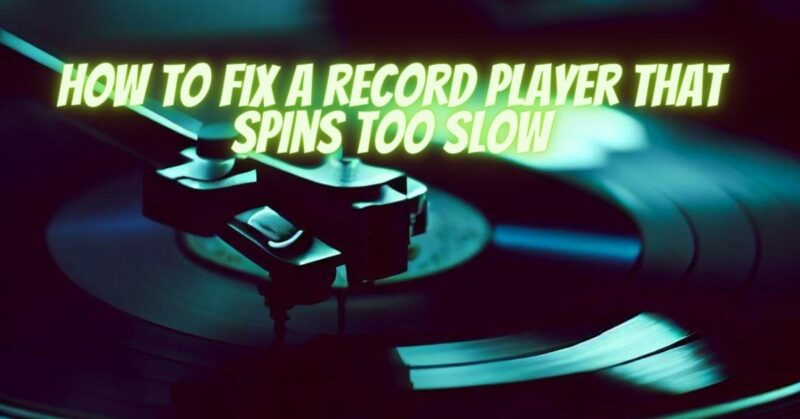A record player spinning too slowly can lead to distorted audio playback and an unsatisfactory listening experience. Fortunately, there are several troubleshooting steps you can take to address this issue and restore the proper rotation speed of your turntable. In this article, we’ll guide you through the process of fixing a record player that spins too slow, helping you get back to enjoying your vinyl collection with optimal playback quality.
- Check the Drive Belt: Many record players utilize a belt-drive system that connects the motor to the turntable platter. Over time, the belt can become loose, stretched, or worn, resulting in slower rotation speed. Start by accessing the drive belt, usually located underneath the turntable platter. Inspect the belt for signs of damage or excessive slack. If necessary, refer to your turntable’s manual or manufacturer’s instructions on how to properly adjust or replace the drive belt.
- Clean and Lubricate the Spindle Bearing: The spindle bearing, which supports the turntable platter, plays a crucial role in maintaining smooth rotation. Over time, dust and debris can accumulate, causing friction and impeding the rotation speed. Carefully clean the spindle bearing using a soft cloth or a mild cleaning solution recommended by the turntable manufacturer. Once clean, apply a small amount of lubricant suitable for turntable use to ensure smooth movement.
- Verify the Power Supply: Inadequate power supply can impact the rotation speed of your record player. Ensure that the turntable is plugged into a stable power source and avoid using power outlets shared by other high-power devices that may cause voltage fluctuations. Try using a different power outlet to rule out any potential power-related issues.
- Adjust the Speed Selector Switch: Most record players feature a speed selector switch that allows you to choose between 33 1/3, 45, or 78 RPM. Verify that the switch is set to the appropriate speed for your record. Sometimes, the switch can become misaligned or worn, affecting the rotation speed. Gently move the switch back and forth to ensure it engages properly with the desired speed setting.
- Seek Professional Assistance: If the above steps do not resolve the issue, it may be necessary to seek professional assistance. A qualified technician can diagnose and address more complex mechanical or electrical problems that may be causing the slow rotation speed. They can also perform any necessary repairs or adjustments to restore optimal performance.
Conclusion:
A record player spinning too slowly can diminish your listening experience and impact the quality of audio playback. By following these troubleshooting steps, including checking the drive belt, cleaning and lubricating the spindle bearing, verifying the power supply, and adjusting the speed selector switch, you can often resolve the issue and restore proper rotation speed. If problems persist, it is advisable to consult a professional technician who can diagnose and fix any underlying mechanical or electrical problems. With a properly functioning record player, you can enjoy your vinyl collection with accurate rotation speed, ensuring a satisfying and immersive musical experience.

